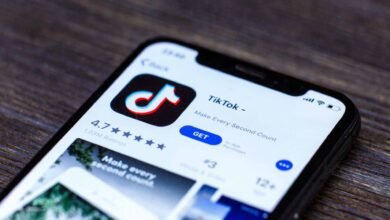
If you’re an artist, musician, or creator looking to sell your digital work as an NFT, Rarible is a great platform to consider. It’s a decentralized marketplace that allows users to easily create, buy, and sell NFTs. The platform is built on the Ethereum blockchain, which means that transactions are secure and transparent. Listing an NFT on Rarible is a straightforward process that involves creating an account, connecting your wallet, and uploading your digital asset. In this article, we’ll guide you through the process of listing your NFT on Rarible.
Steps to list an NFT on Rarible:
Here are 10 simple steps to list an NFT on Rarible
- Create a Rarible account
- Connect your wallet
- Create your NFT
- Choose your NFT’s file type
- Add details to your NFT
- Set your NFT’s price
- Choose your NFT’s royalty fee
- Review and confirm your NFT listing
- Share your NFT on social media
- Monitor your NFT’s sales and activity
1. Create a Rarible Account:
To list your NFT on Rarible, you’ll first need to create an account. Here’s how:
- Go to Rarible.com and click “Sign Up” in the top right corner of the page.
- You’ll be asked to connect your wallet. If you don’t have a wallet yet, you’ll need to create one. Rarible supports a variety of wallets, including MetaMask, WalletConnect, and Coinbase Wallet.
- Once you’ve connected your wallet, you’ll be asked to create a username and password. Make sure to choose a strong password and keep it safe.
- After you’ve created your account, you’ll be taken to your Rarible dashboard. Here, you can view your profile, track your activity, and manage your NFTs.
- Before you can list an NFT on Rarible, you’ll need to verify your account. To do this, click on your profile icon in the top right corner of the page and select “Settings” from the dropdown menu.
- On the settings page, you’ll see a “Verification” tab. Click on this tab to begin the verification process.
- You’ll be asked to provide some personal information, including your name, address, and phone number. You’ll also need to upload a photo of your ID and a selfie.
- Once you’ve submitted your information, Rarible will review your application. This process can take up to 24 hours.
- Once your account is verified, you’ll be able to list your NFTs on Rarible.
Creating a Rarible account is quick and easy, and it’s an essential first step if you want to sell your digital creations as NFTs. By following these steps, you’ll be able to create an account and start listing your NFTs on Rarible in no time.
2. Connect your Wallet:
To connect your wallet to Rarible, follow these steps:
- Log in to your Rarible account and click on your profile icon in the top right corner of the page.
- Select “Wallet” from the dropdown menu.
- You’ll see a list of supported wallets. Please select the wallet you wish to connect to.
- Follow the prompts to connect your wallet to Rarible.
- Once your wallet is connected, you’ll be able to create, buy, and sell NFTs on Rarible.
Connecting your wallet is an important step if you want to use Rarible to create or purchase NFTs. By following these steps, you’ll be able to connect your wallet to Rarible quickly and easily.
3. Create your NFT
To create an NFT on Rarible, follow these steps:
- Log in to your Rarible account and click on “Create” in the top right corner of the page.
- You’ll be prompted to choose the type of NFT you want to create. You can choose from a variety of options, including art, music, and videos.
- Once you’ve selected the type of NFT you want to create, you’ll be taken to the NFT creation page. Here, you’ll be able to add details to your NFT, such as a title, description, and tags.
- You’ll also need to choose the file type for your NFT. Rarible supports a variety of file types, including JPEG, PNG, MP3, and MP4.
- Once you’ve added all the necessary details to your NFT, you’ll be able to upload your file. Make sure to choose a high-quality file that showcases your work in the best possible way.
- After you’ve uploaded your file, you’ll be able to set the price for your NFT. You can choose to list your NFT for a fixed price or set it up for auction.
- You’ll also need to choose the royalty fee for your NFT. This fee is a percentage of the sale price that you’ll receive every time your NFT is sold in the future.
- Once you’ve set the price and royalty fee for your NFT, you’ll be able to review and confirm your listing.
- After you’ve confirmed your listing, your NFT will be available for purchase on Rarible.
Creating an NFT on Rarible is a simple process that can help you showcase your digital creations and earn money from your work. By following these steps, you’ll be able to create an NFT on Rarible in no time.
4. Choose your NFT’s File Type:
When creating an NFT on Rarible, the file type you choose will depend on the type of digital asset you want to create. Here are some of the most common file types used for NFTs:
- JPEG: This file type is commonly used for digital art and photographs. It’s a compressed file format that allows for high-quality images with relatively small file sizes.
- PNG: This file type is similar to JPEG but supports transparency, making it a popular choice for digital art and logos.
- MP3: This file type is used for digital music and audio recordings. It’s a compressed format that allows for high-quality sound with relatively small file sizes.
- MP4: This file type is used for digital videos. It’s a compressed format that allows for high-quality video with relatively small file sizes.
- GIF: This file type is used for animated digital art. It’s a compressed format that allows for small, looping animations.
When choosing a file type for your NFT, it’s important to consider the type of digital asset you’re creating and the quality of the file. You’ll want to choose a file type that showcases your work in the best possible way while also keeping the file size manageable.
Once you’ve chosen your file type, you’ll be able to upload your file to Rarible and create your NFT. Rarible supports a variety of file types, so you’ll be able to create an NFT no matter what type of digital asset you’re working with.
Creating an NFT is a great way to showcase your digital creations and earn money from your work. By choosing the right file type for your NFT, you’ll be able to create a high-quality digital asset that’s sure to impress.
5. Add Details to your NFT
When creating an NFT, you’ll want to add as many details as possible to help potential buyers understand what they’re purchasing.
- Title: Your NFT should have a descriptive title that accurately represents the digital asset you’re selling.
- Description: The description should provide more information about the digital asset, including its size, resolution, and any other relevant details.
- Tags: Adding relevant tags to your NFT can help potential buyers find it more easily.
- Royalties: You can set a royalty percentage that you’ll receive every time your NFT is resold, which can help you earn more money over time.
- Edition size: You can choose to sell a limited edition of your NFT, which can increase its value and exclusivity.
- Preview: Providing a preview of your NFT can help potential buyers get a better sense of what they’re purchasing.
- Certificate of authenticity: You can create a certificate of authenticity for your NFT, which can help buyers verify its authenticity and provenance.
- Creator information: You should include information about yourself as the creator of the NFT, including your name, social media handles, and website.
By including these details, you can create a more complete and compelling NFT that’s more likely to attract potential buyers. When creating your NFT, be sure to take the time to provide as much information as possible to help your digital asset stand out from the crowd.
6. Set your NFT’s Price:
When setting the price for your NFT, there are several factors to consider.
- Rarity: The more rare your NFT is, the more valuable it is likely to be. If you’ve created a one-of-a-kind digital asset, you may be able to charge a higher price for it.
- Demand: The more demand there is for your NFT, the more you can charge for it. If you’ve built up a following on social media or have a strong reputation in the NFT community, you may be able to charge more for your digital asset.
- Comparable sales: Look at other NFTs that are similar to yours and see what they’ve sold for. This can help you get a sense of what the market is willing to pay for similar digital assets.
- Time: Consider how much time and effort you put into creating your NFT. If you spent a lot of time and resources creating your digital asset, you may want to charge more for it.
- Royalties: If you’ve set a royalty percentage for your NFT, you may be able to charge a higher initial price for it.
Ultimately, the price you set for your NFT will depend on a variety of factors, including the ones listed above. Be sure to take the time to research the market and consider your own goals when setting the price for your digital asset.
7. Choose your NFT’s Royalty Fee:
When choosing a royalty fee for your NFT, there are several factors to consider.
- Market standard: Look at what other NFT creators are charging for royalties. This can help you get a sense of what the market is willing to pay.
- Your goals: Consider what you hope to achieve with your NFT. If you’re looking to make a long-term investment, you may want to set a higher royalty fee. If you’re more focused on building your reputation as an NFT creator, you may want to set a lower royalty fee.
- Rarity: The more rare your NFT is, the more valuable it is likely to be. If you’ve created a one-of-a-kind digital asset, you may be able to charge a higher royalty fee.
- Demand: The more demand there is for your NFT, the more you can charge for it. If you’ve built up a following on social media or have a strong reputation in the NFT community, you may be able to charge a higher royalty fee.
- Platform fees: Keep in mind that some NFT platforms charge fees for transactions. You’ll want to factor these fees into your royalty fee to ensure that you’re still making a profit.
Ultimately, the royalty fee you choose will depend on a variety of factors, including the ones listed above. Be sure to take the time to research the market and consider your own goals when setting the royalty fee for your digital asset.
8. Review and Confirm your NFT listing:
When listing your NFT, it’s important to review all of the details carefully to ensure that everything is accurate. Here are some things to check before confirming your listing:
- Description: Make sure that the description of your NFT is accurate and includes all of the relevant details. This can include information about the artwork, the medium used, and any other relevant details.
- Price: Double-check that you’ve set the price for your NFT correctly. This includes any royalties or platform fees that may be associated with the sale.
- Royalties: If you’ve set a royalty percentage for your NFT, make sure that the percentage is accurate and that you’re comfortable with the terms.
- Images: Check that the images you’ve included with your listing accurately represent your NFT. Make sure that the images are high-quality and show your digital asset in the best possible light.
- Platform fees: If the platform you’re using charges fees for transactions, make sure that you understand how these fees will affect your earnings.
Once you’ve reviewed all of these details, you can confirm your listing. Be sure to keep track of any relevant information, such as the listing ID or transaction details, in case you need to refer back to it later.
9. Share your NFT on Social Media:
Sharing your NFT on social media is a great way to promote it and get more exposure. Here are some tips for sharing your NFT on social media:
- Choose the right platform: Consider which social media platforms are most popular among your target audience. If you’re aiming to reach a younger audience, platforms such as Instagram or TikTok may be more effective, while LinkedIn may be more suitable if you’re targeting a more professional demographic.
- Use high-quality images: Make sure that the images you use to promote your NFT are high-quality and show your digital asset in the best possible light. This can help to attract more attention and make your NFT more appealing to potential buyers.
- Include relevant hashtags: Hashtags can help to make your NFT more discoverable on social media. Be sure to include relevant hashtags in your posts to help people find your content.
- Engage with your audience: Respond to comments and messages from your followers to build relationships and show that you’re engaged with your community.
- Share updates: If you’re working on new NFTs or have other updates to share, be sure to post about them on social media. This can help to keep your followers engaged and interested in your work.
By following these tips, you can help to promote your NFT and attract more attention from potential buyers.
10. Monitor your NFT’s Sales and Activity:
Monitoring your NFT’s sales and activity is important to help you understand how your digital asset is performing and to make informed decisions about future listings. Here are some ways you can monitor your NFT’s sales and activity:
- Use analytics tools: Many NFT marketplaces offer analytics tools that allow you to track your sales and activity. These tools can help you to understand how your NFT is performing and identify areas for improvement.
- Track social media mentions: Keep an eye on social media to see if people are sharing your NFT or talking about it. This can help you to gauge interest and identify potential buyers.
- Monitor transaction history: Check your transaction history regularly to see if there are any patterns or trends that you can identify. This can help you to make informed decisions about future listings.
- Engage with buyers: If someone purchases your NFT, consider reaching out to them to thank them for their support. This can help to build relationships and encourage repeat business.
By monitoring your NFT’s sales and activity, you can gain valuable insights into how your digital asset is performing and make informed decisions about future listings.
Conclusion:
In conclusion, listing an NFT on Rarible is a relatively simple process that can be completed in just a few steps. First, you’ll need to create your digital asset and save it in a compatible format. Next, you’ll need to create an account on Rarible and connect your wallet. Once you’ve done that, you can upload your NFT and set your price and other details. Finally, you’ll need to confirm the transaction and wait for your NFT to be listed on the marketplace.
While there are many other factors to consider when listing an NFT, such as marketing and promotion, these basic steps can help you get started and start selling your digital assets on Rarible. With the growing popularity of NFTs, there’s never been a better time to get involved and start creating and selling your unique digital assets.
FAQs:
1. What Kind of Digital Assets can be Listed as Rarible
Answer: Rarible supports a wide range of digital assets, including images, videos, music, and other creative works.
2. What kind of wallet do I need to Connect to Rarible?
Answer: Rarible supports a variety of wallets, including MetaMask, WalletConnect, and Portis.
3. How Do I Set the Price for my NFT?
Answer: When listing your NFT on Rarible, you can set the price in ETH or any other currency that’s supported by the marketplace.
4. What are the Fees For Listing an NFT on Rarible?
Answer: Rarible charges a fee of 2.5% for each transaction, which includes both the buyer and seller fees.
5. How long Does it Take for my NFT to be listed on Rarible?
Answer: Once you’ve confirmed the transaction and paid the fees, your NFT should be listed on Rarible within a few minutes. However, it may take longer during times of high network congestion.






